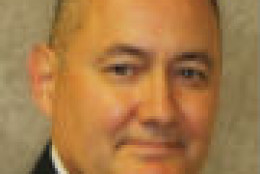Army
-
The Defense Department has professed a belief in open systems architectures for years, but has had trouble translating its stated policy preferences into acquisition outcomes. A program to modernize the military's helicopters aims to change that
November 26, 2014 -
Maureen Casey with JP Morgan Chase and Company, and the Rand Corporation's Dr. Margaret Harrell, join host Derrick Dortch to talk about a new report that looks at lessons learned from a program that helps veterans find jobs in private sector. November 21, 2014 (Encore presentation November 28, 2014)
November 21, 2014 -
Janet Hill, principal at Hill Family Advisors, sits down with the Women of Washington radio show to discuss the importance of diversity in American corporations and her famous Wellesley classmate - Hillary Clinton.
November 19, 2014 -
The pace of new Ebola infections appears to have leveled off, but its too early declare victory. A lot of work is going on behind the scenes, on the research front. Army scientists are working on a vaccine for Ebola. With troops being deployed to West Africa to help control and treat the outbreak, Army scientists are taking the most advanced vaccines forward as quickly as possible. Dr. John Dye is the viral immunology branch chief at the U.S. Army Medical Research Institute of Infectious Diseases. He tells Tom Temin on the Federal Drive that for the Army, research into infectious diseases has a long history.
November 17, 2014 -
Jeffrey Cathey and Lewis Runnion with Bank of America will discuss how the company is helping veterans find jobs in the private sector after they complete their military service. November 14, 2014
November 14, 2014 -
The Army Corps of Engineers' strategy for building more resilient civil works infrastructure involves planning for more unpredictable weather events, and treating watersheds as integrated systems instead of a collection of standalone projects.
November 13, 2014 -
Mike Krieger, the former Army deputy CIO/G6, retired after 35 years in government. He says the move to email-as-a-service in the cloud provided the Army the roadmap to change how it looks at shared services.
November 13, 2014 -
Former Army CIO Susan Lawrence discusses the challenges her agency faces in modernizing its network systems and the future of women in the service.
November 12, 2014 -
Prodded by an earlier pilot project with the Joint Staff, the Army is moving aggressively to replace thousands of desktop computers at the Pentagon with zero client hardware. The project should be completed by the end of 2015.
November 12, 2014 -
It may seem like a leap to go from Army sniper to a career helping federal agencies deliver great online customer service and software development practices. But that's the story of Randy Tharp. A wounded warrior of two tours of duty in Iraq, he's also had two tours of duty as a federal civilian employee before heading to the Five-Nine Group.
November 11, 2014 -
It may seem like a leap to go from Army sniper to a career helping federal agencies deliver great online customer service and software development practices. But that's the story of Randy Tharp. He's a wounded warrior of two tours of duty in Iraq, and he's also had two tours of duty as a federal civilian employee before heading to the Five 9 Group. Tom Temin spoke to Tharp on the Federal Drive.
November 11, 2014 -
On this week's On DoD, some thoughts on the Army drawdown from the Army's chief personnel officer.
November 05, 2014 -
The Pentagon has professed for years that that open architectures were a great idea. Shrinking budgets might make them the default option.
November 05, 2014 -
The Office of Special Counsel recently found the Army had discriminated against transgender civilian employee Tamara Lusardi. Lusardi, a quality assurance specialist, faced what OSC described as "frequent" and "pervasive" harassment on a daily basis. The Army didn't admit to prohibited personnel practices, but it did agree to start diversity and sensitivity training. Larry Youngner is a partner at the law firm Tully Rinckey. He joined Tom Temin on the Federal Drive to discuss the implications of the case.
October 30, 2014 -
By the end of next year, the Army will install advanced electric meters at most of its large buildings, giving the service much more detailed data on how it uses energy than it's ever seen before.
October 23, 2014






